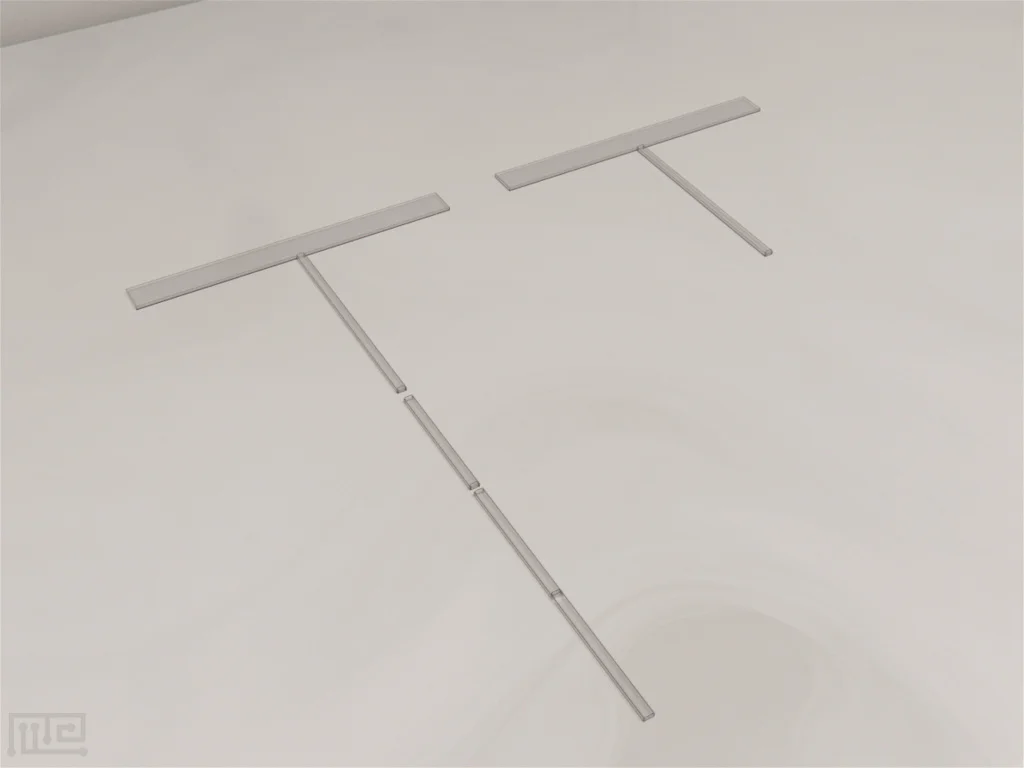The Ant T-maze is designed to assess social, spatial, and cognitive behaviors in ants. Traditionally utilized for studying spatial and cognitive behavior in rodents, the T-maze can also be adapted for ant colonies, enabling the observation of natural communication behaviors. Customization options are available upon request.
$1,190.00
10% off with your subscription Membership



The Ant T-maze is utilized to assess ants’ social, spatial, and cognitive behaviors. While the T-maze is traditionally employed to study spatial and cognitive behavior in rodents, it can also be adapted for ant colonies, allowing the observation of communication behaviors as they occur in their natural habitat.
Communication is essential for behaviors requiring cooperation among individuals, such as nestmate recognition, mating, and foraging. Consequently, studying interactions within insect colonies has garnered significant interest. Unlike humans, who rely on spoken language, insects communicate through advanced motor displays, like the waggle dance in bees, or through odor cues, such as pheromone trails.
The Ant T-Maze facilitates investigations into ants’ communicative behaviors, particularly the hypothesis that ants transfer directional information via antennation. The apparatus consists of two T-shaped mazes placed on a slider. The maze starts at the stem, with the two arms at the T head serving as goal/reward arms. This dual T-Maze setup provides visually similar but distinct information environments to evaluate the communication behaviors of ants from the same colony.
Other mazes used in studying insect behavior include the Bee Radial Arm, Bee Reward Expectation Apparatus, and Drosophila Y Maze.
The Ant T-maze features a stem measuring approximately 150 mm in length and 5 mm in width, while the head is 220 mm long and 20 mm wide. It is linked to the ant nest via a communication arm that is around 80 mm long and 50 mm wide. An additional path, known as the buffer, measuring 80 mm in length, is situated between the communication arm and the T-maze. Both the communication arm and the buffer are detachable. The T-maze is also connected to a second T-maze of identical dimensions through a slider mechanism.
Ensure the device is cleaned before, after, and between uses. Illuminate the maze with overhead lights to avoid shadow formation. Utilize a tracking system like Noldus EthoVision XT for observing and recording subject movements. Although optional, the use of disposable sheets inside the apparatus is recommended to minimize the impact of pheromone trails on the experiment.
Ants can be housed in clear plastic box and should be fed three times a week. Prior to conducting the trials, the ants are to be starved for about 3 to 5 days.
Divide the ants into two groups: informed ants and non-informed ants. The ants that remain in the nest without interacting with the informed ants will serve as the control group. Use one of the T-Mazes (T1) exclusively for the informed ants. Select the first two ants that reach the goal arm as the informed ants and remove the remaining ants from the apparatus. Mark the informed ants with acrylic paint and allow them to return to the goal arm up to four times.
Release the non-informed ants onto the communication arm to facilitate contact with the informed ants. Separate the informed ants from the non-informed ants and allow them to move beyond the communication arm to the designated T-maze (T2). Return the informed ants to their nest.
Alternatively, allow the informed ants to make a single move toward the goal arm. Remove the communication arm to ensure natural contact with the non-informed ants. Use a small stick or a toothpick to form a pathway to the designated maze.
Popp, Bonnett, Evison, Robinson, and Czaczkes (2017) investigated tactical communication between two separate colonies of Lasius ants using the same apparatus but with slightly different methodologies. In Experiment 1, L. niger colonies were used, while Experiment 2 involved L. neglectus colonies. Two informed ants were selected to relay information to the non-informed ants through antennation. The newly informed ants were then introduced to a separate T-maze designated for them. The experiment was considered successful if these ants reached the goal arm after contact. Initial results appeared positive, but upon applying more stringent criteria to both experiments, no evidence of physical communication of food direction was found.
The following data can be analyzed using the T maze:
The T-maze is a straightforward device designed for studying cognitive functions and behavioral assays in various species without inducing stress. It is easy to clean and can be lined with disposable sheets for convenience. Two T-mazes are connected by a slider, preventing contamination from bodily fluids that might serve as olfactory cues. The T-maze features a removable communication arm and a buffer arm, which can be used according to the experimenter’s requirements.
Task performance can be influenced by factors such as the species, their foraging methods, and the type of environment. Contamination, such as pheromone release, can lead to inaccurate experimental results. The allocated interaction period might be insufficient for effective communication. Additionally, the subject’s choices may be significantly influenced by its motivation, which can be affected by variations in the rewards during training and the actual experiment.
Popp, S., Buckham-Bonnett, P., Evison, S.E.F., Robinson. E. J. H., Czaczkes. T. J., (2017). No evidence for tactile communication of direction in foraging Lasius ants. Insectes Sociaux. 65(1). PP 37-46 https://doi.org/10.1007/s00040-017-0583-6
DISCLAIMER: ConductScience and affiliate products are NOT designed for human consumption, testing, or clinical utilization. They are designed for pre-clinical utilization only. Customers purchasing apparatus for the purposes of scientific research or veterinary care affirm adherence to applicable regulatory bodies for the country in which their research or care is conducted.
